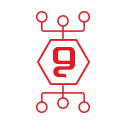Move to the cloud securely and without unexpected costs
Iron rules for moving to the cloud in a survivable, secure way and without unexpected costs:
1. Costs for software houses - when moving to the cloud, it is very likely that the software houses will require a reinstallation of the software, which involves additional costs.
2. Costs for software houses - make sure that the software that is transferred to the cloud supports new operating systems. It can and will be necessary to upgrade the application/SQL, which costs quite a bit of money.
3. Firewall - many cloud providers offer Vdom (virtual firewall that sits on the same iron as other customers)
The hardware component is sometimes required to be upgraded due to vulnerabilities. Since a device upgrade directly affects a large number of customers, the cloud providers reject the version upgrade.
The more correct thing is to demand a dedicated firewall in the cloud and thus get full control.
4. Firewall - don't give up on hardening the firewall and implementing information security components in it.
This hardening and implementation will reduce the chance of data damage.
5. Firewall - it is mandatory to make sure that all users log in after additional identification. This is a basic thing that unfortunately still does not happen to everyone.
6. Logs - make sure that logs are saved in Firewall for a period of at least one year back. This is necessary for the investigation of an information security incident.
7. Monitoring - make sure that you receive an indication regarding the utilization of resources, which will prevent shutdowns and malfunctions that could have been avoided.
8. Protection of the servers - do not give up implementing the EDR component on the servers. A component that will reduce the chance of an extortion incident.
9. Information security monitoring - it is important to make sure that information security tools are monitored and alerts are handled immediately.
10. Delay - LATENCY - Make sure with the cloud provider / integrator that there will not be a problem of slowness in the environment due to the physical distance between the users and the server environment.
Sometimes it is also necessary to consult with the relevant software house.
11. Backup - make sure there are several backup circuits. The minimum is a backup within the farm for other equipment and an additional backup for another server farm.
The backup must meet the organizational policy of how much data loss the organization is willing to tolerate.
12. Patch management system - updates will save you from an information security incident of exploiting a vulnerability that was known in advance.
13. Backup - demand to receive daily indications of the success / failure of the backup.
14. Survivability - Survivability begins at the client's site - the recommendation is two aggregation switches connected to two Firewall devices in a binder that are connected to two Internet lines from two different infrastructure providers, it is possible to decrease the level of survivability as long as the organization is aware of it.
15. Make sure the quote includes the costs of adding resources: memory, CPU and volume.
16. Connecting users - implement a zero trust system, which requires users who connect outside the organization to meet threshold requirements, for example: antivirus inventions, an updated operating system, etc.
Good luck moving to the cloud 🙂
Author: Zabri Idan, VP of expert services and information security at Genie
You may be interested in:

פישינג בעסקים: איך לזהות, למנוע ולהגיב נכון


החשיבות של סריקות פגיעויות באבטחת סייבר

הכוח של ניטור הרשת האפלה באבטחת מידע

התיקון ה-13 לחוק הגנת הפרטיות





